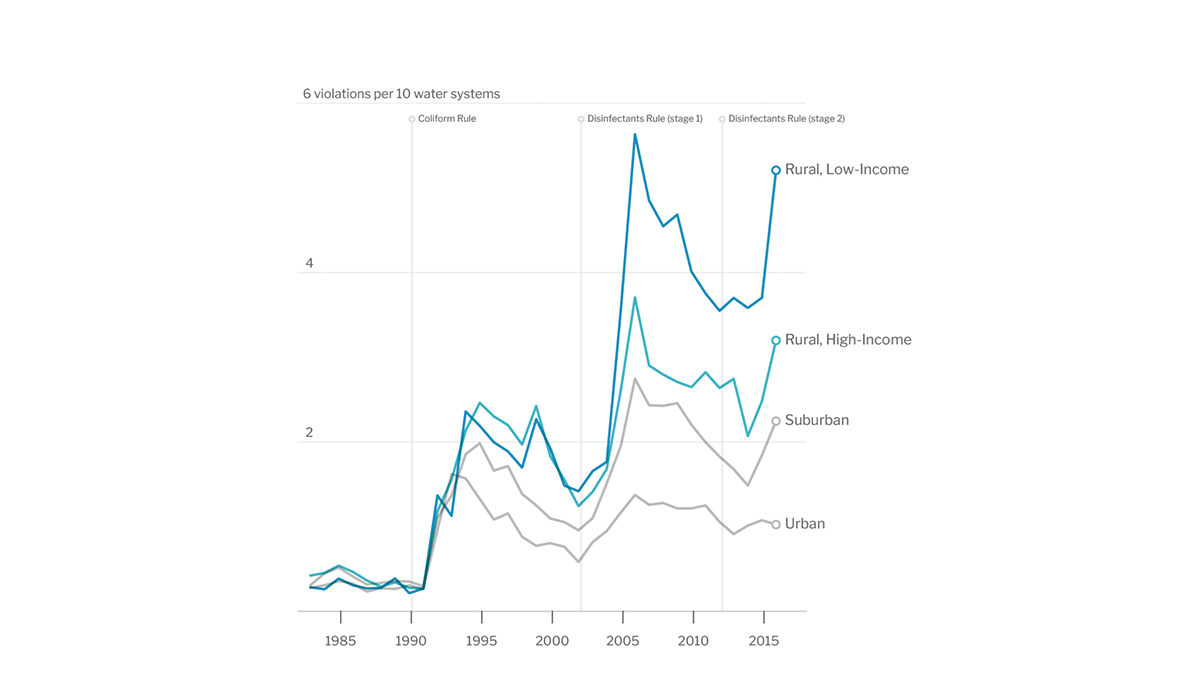Most Americans have access to safe drinking water. But most isn’t all. When we narrow our focus, we find that pockets of American communities are afflicted with high levels of contaminated water. While the country was focused on Flint, Michigan’s water crisis in 2015, almost 10% of Americans were drinking contaminated water that violated water quality standards. That’s nearly 21 million people. Maura Allaire and colleagues at the University of California, Irvine examined water quality violations across the US from 1982-2015. They analyzed geographic and temporal patterns with the goal of helping state enforcement agencies focus their attention on areas at high risk of contamination.
As depicted in the graph above, rural areas were most likely to experience water quality violations compared to suburban or urban areas. Low-income rural areas were most affected, and rural counties of Texas, Oklahoma, and Idaho had the most violations. Spikes in violations were more likely to occur after implementation of new water quality standards, as communities struggled to decrease contaminant levels to match new standards.
The researchers cite decreasing population size and incomes as common obstacles faced by rural populations when following water purification standards. Rural municipalities often struggle with sufficient staffing and technical capacity to test their water. Rural residents may be less politically engaged in local water quality issues due to language barriers and education constraints.
Rural towns often rely on outside funding and low-interest government loans to support infrastructure to correct water quality violations. However, as of June 2017, over $600 million in grant funding was cut from EPA drinking water programs. The current EPA administration is looking to overturn clean water regulations implemented during the Obama administration, posing further threats towards the public’s health.
Databyte via David Gaitsgory @dgaitsgo, using data directly from the SDWIS Fed Reporting Services System













